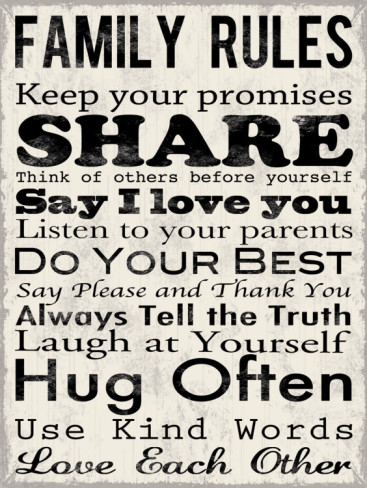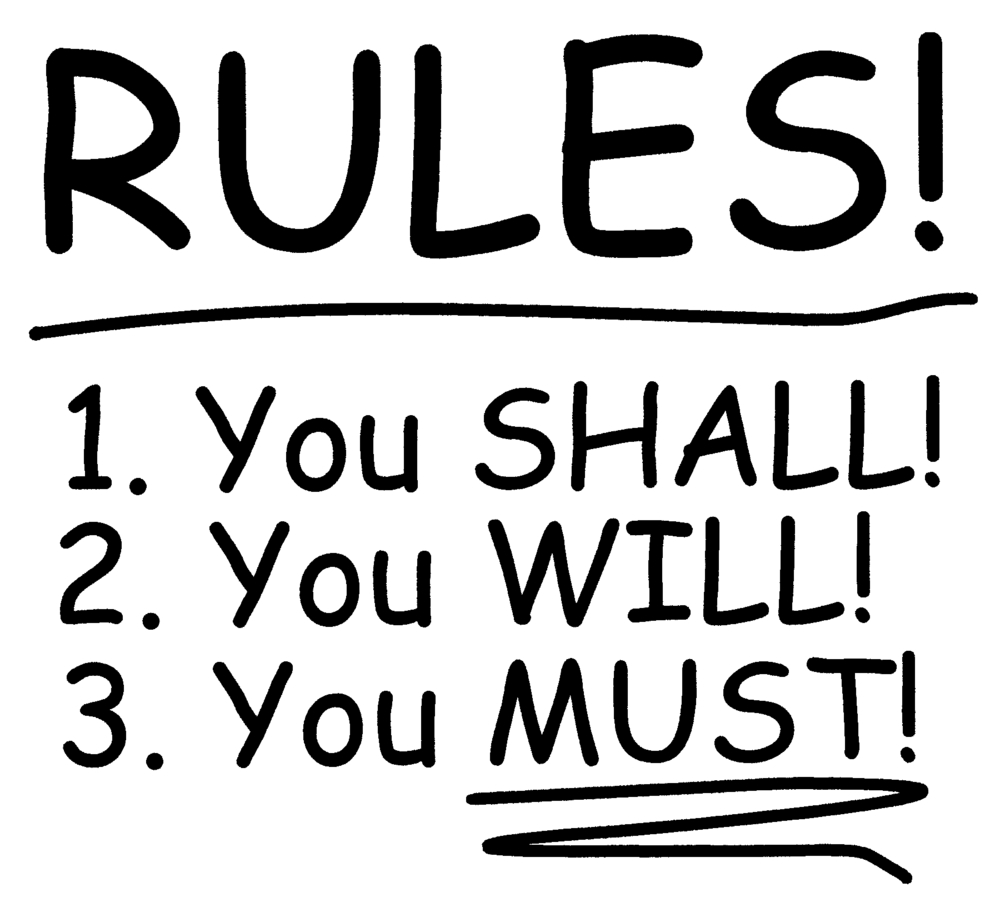How to design rules that work
Rules are ever present in our daily lives. We follow social rules, company rules, and laws. We create organizations by making sets of rules, we create deals and contracts all defined by rules. But very few people learn how to create rules. Most rules, don’t work. As a former game designer, I’ve studied rules academically and tried and tested rules by the thousands. This is what I’ve learnt so far about creating rules that work.
Rules always create side effects
All rules are limitations on an individuals actions (a rule says you can’t design text a certain way). But since people are surprisingly intelligent, they always find ways around rules (the rule creates a counter culture and suddenly hipster typographical posters abound!). We smile at this behaviour in kids, always looking for ways to get around bedtimes, but we fail to see that every human does this. It’s so ingrained in the human condition it even has a name in both game design and economics: emergent behaviour.
Emergent behaviour means the behaviour that arrives as an unforeseen consequence to a situation. Cheating at games is an emergent behaviour. Rebellion is an extreme emergent behaviour.
Rules always - without exception - create these unforeseen behaviours because rules are *fractal*. Meaning that rules can never cover every single situation or twist in the language. There will always be new situations the rule should apply to.
- Did you brush your teeth? - Yes. - Did you brush them with the toothbrush? - Yes. - Did you put toothpaste on the toothbrush? - Yes. - Before you brushed your teeth? - No…
When I create rules I try to take emergent behaviour into account, where and how is it likely to happen?, How will the rule affect situations that are slightly different from the normal situation? How often does your management or project manager take emergent behaviour into account when creating rules? If the answer is never, the rules are probably not working.
The softest touch works, while hard rules fail
Surprisingly, the rules that do work aren’t the simple and direct ones. In fact the simpler and more direct the rule is, the more emergent behaviour it creates.
Let me explain how by giving an example. If you set a rule for yourself that you must turn left at every intersection you’ll soon find yourself in conflict with the rule. You might quite quickly arrive at the workaround that the rule doesn’t say how many times to turn left, and from then on you’ll be turning left several times to turn right. I bet you’re thinking of other rules you’re breaking in this way?
But if the rule says you can only turn left at intersections it is much more open to interpretation, and oddly individuals are more inclined to follow it. Maybe I’ll turn right somewhere that’s not an intersection? Or maybe taking a route around the block will be interesting? The more open version of the rule makes the rule more interesting and less annoying.
What’s happening is that activating individuals minds, asking people to judge for themselves, is making them more inclined to work with the system instead of around it. Asking individuals to just follow a rule is more likely to make them bored, frustrated, and opposed to the rule. No matter how normal and simple the rule might seem.
This is why companies like to talk about corporate culture. A culture is simple a set of rules that are not defined, instead the individuals in a culture make it up or pass it along as they go. Culture is a very soft set of social rules, and a great way to lead a group of people in the same direction. It is also very hard to create, because it is soft and made up by the individuals in the culture. And as soon as someone puts pen to paper, the culture is dead. The air of cooperation will be replaced by bored people following the rules.
(Creating cultures is also a part of designing games, and deconstructing culture is essential to economics, so I’ll probably revisit culture in a later post.)
Rules limit what people think
The absolutely worst part of a rule is when it’s followed. Beware of people following hard rules, it never amounts to any good.
If a hard rule is enforced, or socially frowned upon to break, it swiftly becomes a dogma. A rule that is set so hard in individuals minds that they can not break it. Not only are they unable to break the rule, they might even be unable to think about breaking the rule.
We see this happening at all times, all around us. Ever wonder why senior citizens are more often against change? It’s because they have lived with an unquestioned rule for so long, it has become impossible for them to see a world without the rule. The same thing happen with middle managers, unable to alter a rule themselves, and unable to see the effects of them, they stay with rules long after the intended purpose has become irrelevant.
The really worrying part comes from cognitive psychology. Studies seem to indicate that living with the same thoughts for to long actually create rigid structures in your physical brain. Yes, I’m serious. The brain is a huge network of neurons, always making new connections. But living with the same connections, thoughts, for long enough might physically inhibit new connections being made. That’s right, hard rules might actually be shutting down small parts of our brains!
No wonder change comes so slowly right? (For more on the subject, google “Neuro plasticity”)
Creating rules that work
From my years in games and economics I’ve learned a lot of ways not to make rules. But at times we need them, no matter how hard they may be to create. If we’re aware of the pitfalls and careful, we can create rules that work.
Here’s a list of rules that I follow when creating rules (rule-ception?):
- Communicate the outcome of your rule, not the limitations (the rule itself).
- Think up situations that might warp the rules, and take it to extremes.
- Think about how the rule will affect things when it’s purpose is no longer relevant.
- Remember that rules are used by at least two groups of people: individuals, and groups.
- Never punish rule breaking. If you must punish, punish for outcomes.
- Try to be vague. Trust people to interpret rules intelligently.

